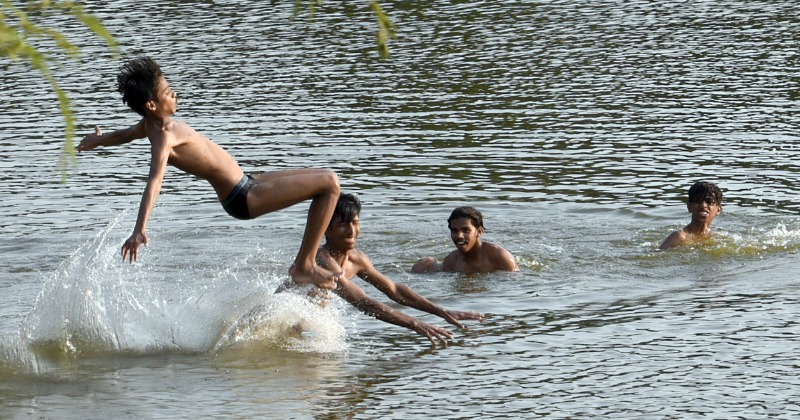In a quiet district of India, a health emergency is unfolding that few could have predicted. Families who once worried about seasonal fevers and common infections are now gripped with fear of a terrifying and rare condition — a brain-eating disease that has claimed lives and left doctors scrambling for answers. Known scientifically as primary amoebic meningoencephalitis (PAM), this disease is caused by a microscopic amoeba called Naegleria fowleri. Despite its rarity, the illness has sparked national concern because of its high fatality rate and the mystery surrounding its sudden rise in certain regions.
- Understanding the Rare Brain-Eating Disease
- Why an Indian State is Facing an Outbreak
- The Human Cost of the Brain-Eating Disease
- Challenges in Diagnosis and Treatment
- Public Health Response in the State
- The Role of Climate Change and Urbanization
- Stories of Resilience and Community Action
- Global Lessons from India’s Battle
- What Experts Say About the Future
- FAQs
- What is the brain-eating disease found in India?
- How do people get infected with Naegleria fowleri?
- Can this brain-eating disease spread from person to person?
- Is there any cure for Naegleria fowleri infection?
- Why are cases of this disease rising in India?
- How can people protect themselves from infection?
- Conclusion
This story is not just about a disease; it is about resilience, medical urgency, and the collective struggle of communities, doctors, and policymakers to contain a silent killer. By examining the origins of this condition, its impact on victims, the medical response, and the broader implications for public health, we gain a deeper understanding of why fighting a rare brain-eating disease in an Indian state is not just a local crisis but a warning for the world.
Understanding the Rare Brain-Eating Disease
The condition in question is triggered by Naegleria fowleri, a free-living amoeba found in warm freshwater bodies such as lakes, rivers, and poorly maintained swimming pools. Infection occurs when contaminated water enters the nose, allowing the amoeba to travel to the brain, where it destroys tissue and causes severe inflammation. The illness progresses rapidly, often within days, and most cases prove fatal.
What makes Naegleria fowleri so alarming is its near invisibility. It cannot be detected with the naked eye, and infections cannot spread from person to person. The amoeba thrives in temperatures between 25–45°C, making warm regions particularly vulnerable. With rising global temperatures and increasing reliance on open water sources, experts fear that cases of this brain-eating disease could become more frequent.
Why an Indian State is Facing an Outbreak
Reports from hospitals in the affected state suggest that several cases of PAM have been detected within a short time span. Many patients were young children and teenagers who had recently been swimming or bathing in local ponds, rivers, or poorly chlorinated pools. This link between contaminated water and infection has raised alarms, as rural areas often rely on natural water sources for daily activities.
Health experts believe climate change is playing a crucial role. As temperatures rise, water bodies remain warmer for longer periods, creating ideal conditions for the amoeba to multiply. Additionally, untreated water supplies, lack of chlorination in public pools, and limited awareness among communities have contributed to the sudden surge in cases.
Dr. Suresh Nair, a neurologist working in one of the state hospitals, explained: “This amoeba is extremely rare, but when it strikes, the consequences are devastating. The biggest challenge is that most patients come to us very late, when the infection has already caused irreversible damage to the brain.”
The Human Cost of the Brain-Eating Disease
Behind the scientific explanations lies a trail of heartbreak. One tragic case involved a 12-year-old boy who developed fever, vomiting, and confusion just days after swimming in a local pond. Within a week, despite aggressive treatment, his condition deteriorated, and he succumbed to the infection. His parents, stunned by the sudden loss, shared that they had never heard of such a disease before.
Stories like these are repeating across communities. Families who once saw local water bodies as safe spaces for recreation now view them with dread. Children are being kept indoors, and public swimming facilities are witnessing a sharp decline in use. The psychological toll is immense, as fear of the unknown often spreads faster than the disease itself.
Challenges in Diagnosis and Treatment
One of the most pressing issues in fighting a rare brain-eating disease in an Indian state is the difficulty of diagnosis. Early symptoms — headache, fever, nausea, and confusion — closely resemble those of meningitis, leading to misdiagnosis. By the time doctors suspect Naegleria fowleri, the infection is usually too advanced.
Laboratory confirmation requires advanced testing facilities that are often unavailable in rural hospitals. This delay costs precious time, and treatment options are limited. Antifungal and antimicrobial drugs like amphotericin B, rifampin, and miltefosine have been used, but survival rates remain extremely low.
Globally, fewer than 5% of recorded cases have survived. This staggering statistic underlines the urgent need for better awareness, early detection, and improved treatment strategies.
Public Health Response in the State
Local governments and health departments are stepping in to address the crisis. Awareness campaigns have been launched to educate communities about the dangers of bathing in unsafe water sources. Public health officials are advising citizens to avoid swimming in stagnant ponds and to ensure water tanks and pools are properly chlorinated.
Emergency meetings have been held with hospital administrators, and specialized training is being provided to doctors to recognize the symptoms of PAM early. The government is also considering stricter regulations for water treatment facilities, as poor sanitation has been identified as a key risk factor.
In rural areas, health workers are going door-to-door, urging families to boil water before use and avoid activities that may expose them to contaminated water. While these measures are vital, experts warn that sustained efforts are necessary to prevent future outbreaks.
The Role of Climate Change and Urbanization
The outbreak in this Indian state is part of a larger pattern. Around the world, rising temperatures are expanding the habitats of dangerous microorganisms. In the United States, several southern states have reported similar cases in recent years, and scientists believe climate change is pushing Naegleria fowleri further north.
Urbanization is another contributing factor. Rapid development often leads to poor sanitation, overcrowding, and reliance on untreated water sources. Without adequate infrastructure, communities remain vulnerable to rare but deadly pathogens. The situation in India reflects this global challenge, highlighting the need for investment in public health infrastructure that can keep pace with changing environmental conditions.
Stories of Resilience and Community Action
Despite the fear, communities are coming together to protect one another. In one district, local women’s groups have started monitoring water tanks, ensuring they are cleaned and chlorinated. Schoolteachers are educating children about safe water practices, turning classrooms into platforms for public health education.
Religious leaders, often influential in rural India, are also playing a role by advising their congregations to stay away from unsafe water bodies during prayer gatherings or festivals. These grassroots efforts show how awareness and collective action can make a difference in containing the spread of such a deadly disease.
Global Lessons from India’s Battle
The fight against a rare brain-eating disease in an Indian state offers valuable lessons for the world. First, it underscores the importance of proactive surveillance and rapid response systems. Rare diseases often go unnoticed until it is too late, but strong health monitoring can catch early warning signs.
Second, it highlights the need for international collaboration. Since cases are rare, pooling data across countries can help doctors better understand treatment options and develop new therapies. Global research partnerships are already underway, but more investment is needed to tackle emerging pathogens.
Finally, the outbreak demonstrates how local issues are intertwined with global challenges like climate change and urbanization. What happens in one Indian state could very well be a glimpse into the future for other countries facing similar environmental shifts.
What Experts Say About the Future
Medical experts remain cautious but hopeful. While the mortality rate of PAM is extremely high, early diagnosis can improve outcomes. Researchers are exploring new drugs and treatment strategies, including experimental therapies that target the amoeba more aggressively.
Dr. Anjali Menon, a public health researcher, commented: “The rise of rare diseases like this is a reminder that our relationship with nature is changing. Climate change, urban expansion, and water scarcity are creating new health risks. The key lies in preparedness — communities, governments, and the medical community must work together to stay ahead.”
FAQs
What is the brain-eating disease found in India?
It is called primary amoebic meningoencephalitis (PAM), caused by the amoeba Naegleria fowleri. The amoeba destroys brain tissue, leading to severe illness and often death.
How do people get infected with Naegleria fowleri?
Infection occurs when contaminated water enters the nose, usually while swimming, diving, or bathing in warm freshwater. The amoeba travels through the nasal passages to the brain.
Can this brain-eating disease spread from person to person?
No, PAM does not spread between people. It is only contracted through direct contact with contaminated water entering the nose.
Is there any cure for Naegleria fowleri infection?
There is no guaranteed cure. Some drugs like amphotericin B and miltefosine have been used with limited success. Early diagnosis is critical for improving survival chances.
Why are cases of this disease rising in India?
Experts believe climate change, rising water temperatures, untreated water sources, and lack of awareness are driving the increase in cases.
How can people protect themselves from infection?
Avoid swimming in warm freshwater bodies, ensure swimming pools are properly chlorinated, and use safe drinking water practices. Boiling water before use can reduce risk.
Conclusion
Fighting a rare brain-eating disease in an Indian state is more than a public health battle; it is a test of resilience, awareness, and preparedness. The outbreak exposes the vulnerabilities in healthcare systems, the risks posed by environmental changes, and the urgent need for stronger public health infrastructure. While the disease is rare, its devastating impact serves as a wake-up call not just for India but for the global community.
The stories of loss, the efforts of doctors working against the odds, and the courage of communities coming together highlight a deeper truth — that health is a collective responsibility. By investing in awareness, research, and infrastructure, societies can confront even the rarest and deadliest of diseases. India’s fight against this brain-eating infection is a powerful reminder that vigilance, education, and unity are the strongest weapons against invisible threats.








